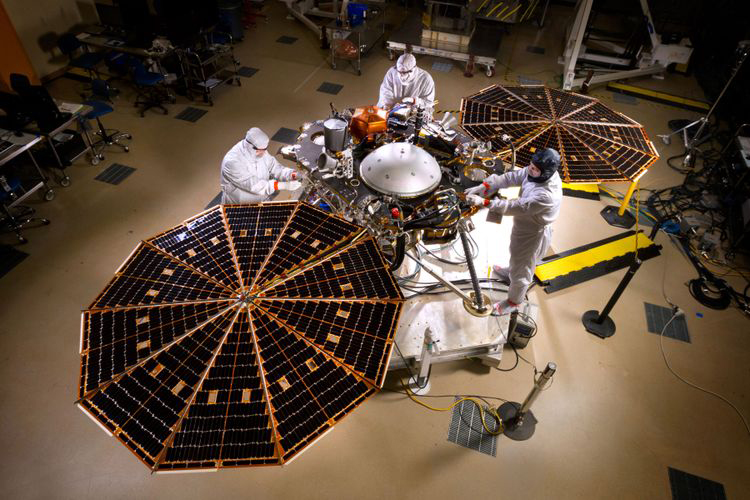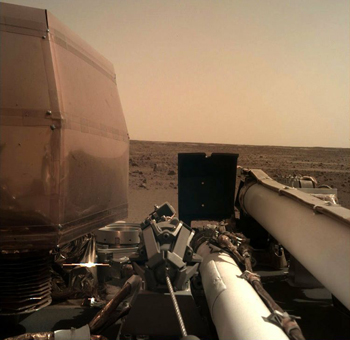- Prime Minister Narendra Modi inaugurates Aero India 2023 in Bengaluru; Releases Commemorative Stamp
- Defence Secretary meets delegations from Saudi Arabia, USA and Oman on the sidelines of Aero India 2023
- Foreign Ministers of 32 countries to attend Aero India 2023
- Embraer showcases the C-390 Millennium at Aero India 2023
Northrop Grumman Technologies support NASA's InSight Mars lander

Six months after launch, NASA's newest Mars explorer, InSight, made its dramatic entrance to the red planet on Monday, Nov. 26, 2018 at 2:52 p.m. EST. InSight, short for Interior Exploration using Seismic Investigations, Geodesy and Heat Transport, will help answer key questions about the early formation of rocky planets in our solar system, including Earth, with help from critical Northrop Grumman-built components. On May 5, 2018, InSight began its 301-million-mile journey to Mars aboard a United Launch Alliance (ULA) Atlas V rocket launched from Vandenberg Air Force Base, California. Northrop Grumman provided key technologies for both the rocket and the lander. Lockheed Martin was responsible for manufacturing the InSight lander.
"We are proud to support our customers Lockheed Martin and NASA for this exciting mission," said Frank Culbertson, president, space systems group, Northrop Grumman. "Once again, our flight-proven components are part of innovative missions that help us better understand the universe, and in this instance, answer critical questions about the red planet."

Northrop Grumman manufactured InSight's cruise stage heat pipes and instrument heat pipes in Beltsville, Maryland; the diaphragm tanks for the lander in Commerce, California; and a two-wing, light weight Ultraflex Solar Array assembly in Goleta, California. Northrop Grumman also built the Ultraflex Solar Arrays used in the successful Mars Phoenix Lander mission that launched in 2007.
Northrop Grumman also produced several components on the ULA Atlas V rocket including the 10-foot diameter composite heat shield, which provides higher performance with lower weight, and essential protection for the first stage engine of the launch vehicle from engine exhaust temperatures in excess of 4,000 degrees Fahrenheit. Technicians fabricated the assembly using advanced fiber placement manufacturing techniques at the company's Iuka, Mississippi facility.
Northrop Grumman manufactured the reaction control system propellant tank for the ULA Atlas V at its Commerce, California facility. In addition, eight Northrop Grumman retro motors manufactured in Elkton, Maryland supported separation of the spent first stage.





